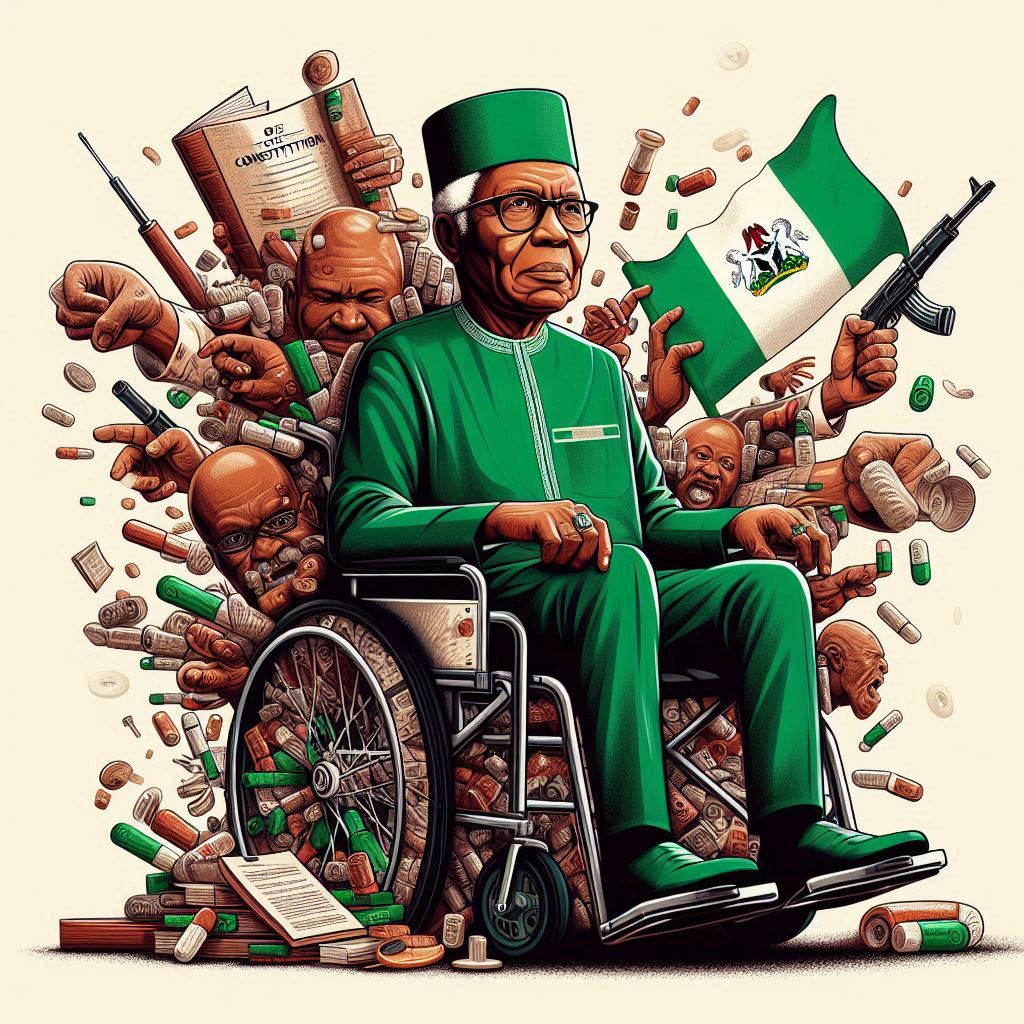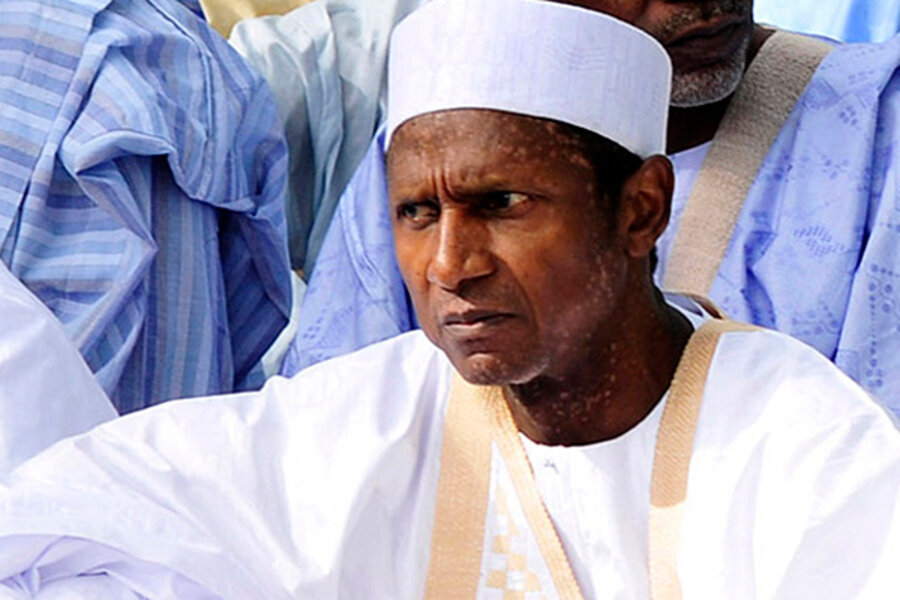1. INTRODUCTION
The position of women in society in relation to men and the subordination, oppression and marginalisation of women has attracted the attention of scholars, activists, feminists and development workers for a very long time. The issues relating to what has come to be known as the women question or why women are oppressed has become very prominent in the last few decades. This paper revisits the basic question of why women are oppressed and the responses that have emerged over time and argues that what is really needed in a consistent, comprehensive and systematic challenge of patriarchy in a way that will lead to transformation of gender relations in all aspects of life. But first, we will clarify the concepts of sex, gender, gender relations and patriarchy.
2. CONCEPTUAL CLARIFICATIONS
SEX
All human beings are normally born male or female. Young males are called boys while adult males are called men. Young females are called girls while adult females are called women. Women all over the world are marginalized. Even in the so-called advanced democracies, women are still marginalized. For instance in the United Kingdom and the United States, women representation in parliament was 9.1 and 9.0 percent respectively as at 1994.[i] The UNDP’s 1995 Human Development Report estimated that women’s unpaid work is equivalent to some $11 trillion annually.[ii] Although women constitute over 50 percent of the population of the world, they are relegated to the background in every facet of life.
GENDER
It is important to note that there is difference between sex and gender. Sex refers to the biological differences between male and female. For instance, the adult female has breast that can secrete milk to feed a baby but the adult male does not have. Gender is the socially and culturally constructed roles for men and women. For instance, gender roles of men as owners of property, decision makers and heads of household are socially, historically and culturally constructed and have nothing to do with biological differences. Gender roles differ from place to place and change with time. But sex roles are naturally fixed.
GENDER RELATIONS
Gender relations are part of social relations, referring to the ways in which the social categories of men and women, male and female, relate over the whole range of social organization, not just to interactions between individual men and women in the sphere of personal relationships, or in terms of biological reproduction. In all aspects of social activity, including access to resources for production, rewards or remuneration for work, distribution of consumption, income or goods, exercise of authority and power, and participation in cultural, political and religious activity, gender is important in establishing people’s behaviour and the outcome of any social interaction. As well as institutions between individual men and women, gender relations describe the social meaning of being male and female, and thus what is considered appropriate behaviour or activity for men and women.[iii]
PATRIARCHY
Patriarchy according to Hartman is a set of social relations which has a material base and in which there are hierarchical relations between men and solidarity among them which enable them in turn to dominate women. The material base of patriarchy is men’s control over women labour power. That control is maintained by excluding women from access to necessary economically productive resources and by restricting women’s sexuality. Men exercise their control in receiving personal service work from women, in not having to do housework or rear children, in having access to women’s bodies for sex, and in feeling powerful and being powerful. The crucial elements of patriarchy as we currently experience them are heterosexual marriage, female child rearing and house work, women’s economic dependence on men reinforced by arrangements in the labour market), the state, the numerous institutions based on social relations among men-clubs, sports, unions, professions, universities, churches, corporations and armies.[iv]
3. WHY ARE WOMEN OPPRESSED ?
In trying to address the women question one basic question has remained constant: why are women oppressed? Many theories and explanations have been given over time in response to this question. Theories concerning public private domains and nature/civilizations have been advanced. Some scholars have posited that the differences between men and women are innate.[v] Others have argued that women are hidden from history because men are located in the public sphere while women are located in the private sphere. Still others are of the view that women are identified with nature while men tend to be identified with culture. They are of the opinion that women in the course of bearing children create things naturally while men create things cultural. In any case, many scholars have argued that these arguments are not correct because they only scratch the surface of the problem. This is because these explanations do not give good reasons why it is women that are marginalized and not men.[vi]
In our view, three positioning have emerged in recent times as serious explanations of why women are oppressed which we have categorized as the materialist conception, the radical feminist position and postmodernist viewpoint. The materialist approach sees oppression of women as systematic and built into the structure of society. They see women’s subordination as having a material base and a consequence of capitalism especially in a class society that is structured in hierarchical patriarchal relations. The argument of this group is grounded on two premises. The first is that women are socialized into low paying jobs, paid less for the same amount of job and taxed more than their male counterparts. Secondly, women in addition to any paid labour that they may be engaged in do unpaid domestic labour outside capitalist relations of production. Domestic labour is not only unpaid but is also not computed by economist in calculating the GDP of counties. Meanwhile, domestic labour is necessary to oil the wheel of capitalism. The materialists argue that domestic work or housework is productive labour and a hidden source of profit for capitalism[vii] The criticism against the materialist conception which has its root in Marxism especially the orthodox ones is that there is too much emphasis on material factors and class analysis. In fact, some scholars argue that for most Marxists, it was unthinkable that working class men might be oppressors in their own homes or that ‘bourgeios’ women might also be oppressed.[viii]
The radical feminists argue that women’s subordination is not rooted in relations of production but in specific relations of reproduction and sexuality. They contend that housework can looked at as reproducing and not producing labour power. Firestone, a radical feminist argued that ‘unlike economic class, sex-class sprang directly from biological reality: men and women were created different, not equal.’[ix] The position of the radical feminists have been criticized for putting too much emphasis on reproduction and sexuality. It gives the impression that women are subordinated mainly because of their role of giving birth to children. But we do know that the subordination of women goes beyond reproduction. Some scholars have pointed out that it is curious that feminists should ‘succumb to such blatant biological determinism.’[x]
The postmodernists contend that women subordination results from the cultural construction of who a man or woman is. They argue that the use of word and language affect our psyche on the definition of men and women. They point to the effectiveness of the capacity of language to shape our thoughts and desires. Postmodernist conceptions of why women are oppressed has been criticized for neglecting the social context of power relations and failing to recognize the systematic oppressions of gender, class and race.[xi]
4. ADDRESSING WOMEN OPPRESSION
Various attempts have been utilized in different cultures and societies to address women oppression. At a point in time, it was thought that inclusion of women in development would address the women question. This led to what became popularly known as Women in Development (WID) in the 1970s. Meanwhile, patriarchal structures and systems were left intact. It did not take long before it dawned on practitioners that mere inclusion of women would not change the position of women in society. It then became necessary to interrogate the process of development and how that process excludes and marginalizes women. This led to the response that became known as Women and Development (WAD) in the 1980s. Similarly, this approach ignored patriarchy and it did not take long for people to realize the place of patriarchy and construction of gender relations, which led to the approach of Gender and Development (GAD) in the late 1980s and early 1990s. Although the GAD approach was meant to interrogate gender relations, the main strategy for its implementation has remained gender mainstreaming. Gender mainstreaming is the systematic process of integrating women and men’s needs, concerns and experiences into the formulation, implementation and evaluation of projects in a way that would address gender inequity. Unfortunately, as gender was being mainstreamed, patriarchy was not touched. After about two decades of trying to implement GAD, the position of women all over the world remains precarious.
There is no doubt that the main beneficiaries of gender mainstreaming are petty bourgeois, middle class, elitist women who when they ascend to position as a result of long years of struggle for the participation of women insist that they made it on merit. Many of these women do little or nothing to address the women question. They not only maintain the status quo but also reinforce patriarchy in collaboration with men.
5. CHALLENGING PATRIARCHY AND PROMOTING WOMEN’S RIGHTS
The challenge is what do we do to address the women question? As noted above, most of the explanations of why women are oppressed based on certain ideological positioning (materialist conception, radical feminist or postmodernists) do not adequately capture in its entirety the complex and historical subordination of women. Furthermore, all the explanations relate to patriarchy in one-way or the other. For instance the materialist conception recognizes that capitalism and patriarchy reinforces each other. Similarly, some radical feminists locate patriarchy in men’s control of women’s sexuality and procreative functions.[xii] Also, culture and the construction of language and words is heavily influenced by patriarchy. Therefore, any attempt to address the women question must put challenge of patriarchy at its center. Some scholars have suggested that patriarchy is located in six relatively autonomous structures, which we have adopted in this paper as programmatic sites that patriarchy can be attacked.[xiii] These sites include domestic production, paid employment, culture, sexuality, male violence and state. It is important to point out that the level of work at the six sites below has to be at the local, national and international levels:
Domestic production
bullet
Challenging patriarchal division of labour in the home
bullet
Advocating for equitable distribution of housework
bullet
Promoting male responsibility for fatherhood and
bullet
Inclusion of domestic work in the computation of GDP.
Paid employment
Challenging stereotypes in paid employment
Fighting discrimination against women in paid employment
Promoting the entry of women into male “dominated or reserved” professions
Culture and Religion
Combating cultural practices that oppress women e.g. widowhood practices, wife inheritance, female genital mutilation e.t.c
Challenging cultural taboos that subordinate women
Challenging practices that promote son preference
Challenging cultural practices that predispose women to malnutrition and restrict access to food.
Challenging stereotypes in upbringing of the boy and girl child
Promoting education of the girl child
Challenging gender stereotypes in the media
Promoting radical and women sensitive interpretation of religion
Sexuality
Empowering girls and women to have control over their sexuality
Challenging practices that predispose women to infections such as STIs and HIV/AIDS
Promoting women sexual and reproductive rights
Male violence
Combating violence against women
Interrogating masculinity and feminity and promoting new conceptualizations of a transformed man and woman.
State
Challenging the patriarchal arrangement of the State and the violence in the State.
Challenging neo-liberalism and fundamentalism
Challenging State practices that fuel violent conflicts
Promoting women participation in governance
Promoting women friendly constitutions and legal frameworks
Promoting redistribution of national budgets in favour of women
Supporting affirmative action for women and other marginalized groups
6. CONCLUSION
There is no doubt that the women question has occupied a central place in the quest for development over the years. There is also a progressive and deeper understanding of why women are oppressed and what needs to be done to reverse the situation. Unfortunately, the programmes and actions meant to address these issues have failed to transform the structures, institutions and systems that perpetuate women oppression. It is quite clear that patriarchy is a comprehensive explanatory framework. Therefore, in order to address the women question and transform gender relations, there is the need to challenge patriarchy in all its manifestations in domestic production, paid employment, culture and religion, sexuality, male violence and the State; and specifically promote women’s rights.
We are confident that if programmes are carefully conceptualized in an innovative, creative and radical manner in a strategic way that will have the greatest impact on patriarchy, then we will be on the right path to overcoming the subordination and oppression of women and bringing about human centred development
ENDNOTES
horizontal rule
[i] It is interesting to note that in some Scandinavian countries like Norway and Sweden, the representation of Women in Parliament is as high as 38 percent(Nwankwo, N ). It is is 30 percent in South Africa(Budlender, D. and Hewitt, G. (2002), Gender Budgets Make More Cents: Country Studies and Good Practice. London, Commonwealth Secretariat
[ii] Morna, C. L. (2000), Gender Budgeting: Myths and Realities. A Paper presented at the 25 years International Womens Politics Workshop in Bonn from 13-14 October, 2000.
[iii] Pearson, R. (2000), “Rethinking Gender Matters in Development” in Allen, T. and Thomas, A. (Eds), Poverty and Development into the 21st Century. Oxford, Oxford University Press. P.18
[iv] Hartman, H. (1997), “The Unhappy Marriage of Marxism and Feminism: Towards a more Progressive Union “ in Nicholson, L. (Ed), The Second Wave: A Reader in Feminist Theory. New York, Routledge. Pp97-120
[v] Agenda No 37 (1998), Empowering Women for Gender Equity.
[vi] Igbuzor, O. (2000), “Methodological Issues in Gender Studies in Nigeria” in The Nigerian Social Scientist, Vol. 3, No. 1. pp14-20
[vii] Dalla Costa, M. and James, S. (1972), The Power of Women and the Subversion of the Community. Bristol, Falling Wall Press.
[viii] Delphy, C. and Leonard, D. (1992), Familiar Exploitation: A New Analysis of Marriage in Contemporary Western Societies. Cambridge, Polity.
[ix] Firestone, S. (1972), The Dialectic of Sex. London, Paladin. p16
[x] Jackson, S. (1999), “Marxism and Feminism” in Gamble, A. March, D. and Tant, T. (Eds), Marxism and Social Science. London, Macmillan Press Ltd.
[xi] Walby, S. (1992), “Post-post-modernism? Theorising Social Complexity” in Barret, M. and Phillips, A. (Eds), Destabilizing Theory: contemporary Feminist Debates. Cambridge, Polity.
[xii] McDonough, R. and Harrison, R. (1978), “Patriarchy and Relations of Production” in Kuhn, A and Wolpe (Eds), Feminism and Materialism: Women and Modes of Production. London, Routeledge & kegan Paul.
[xiii] Walby, 1990












